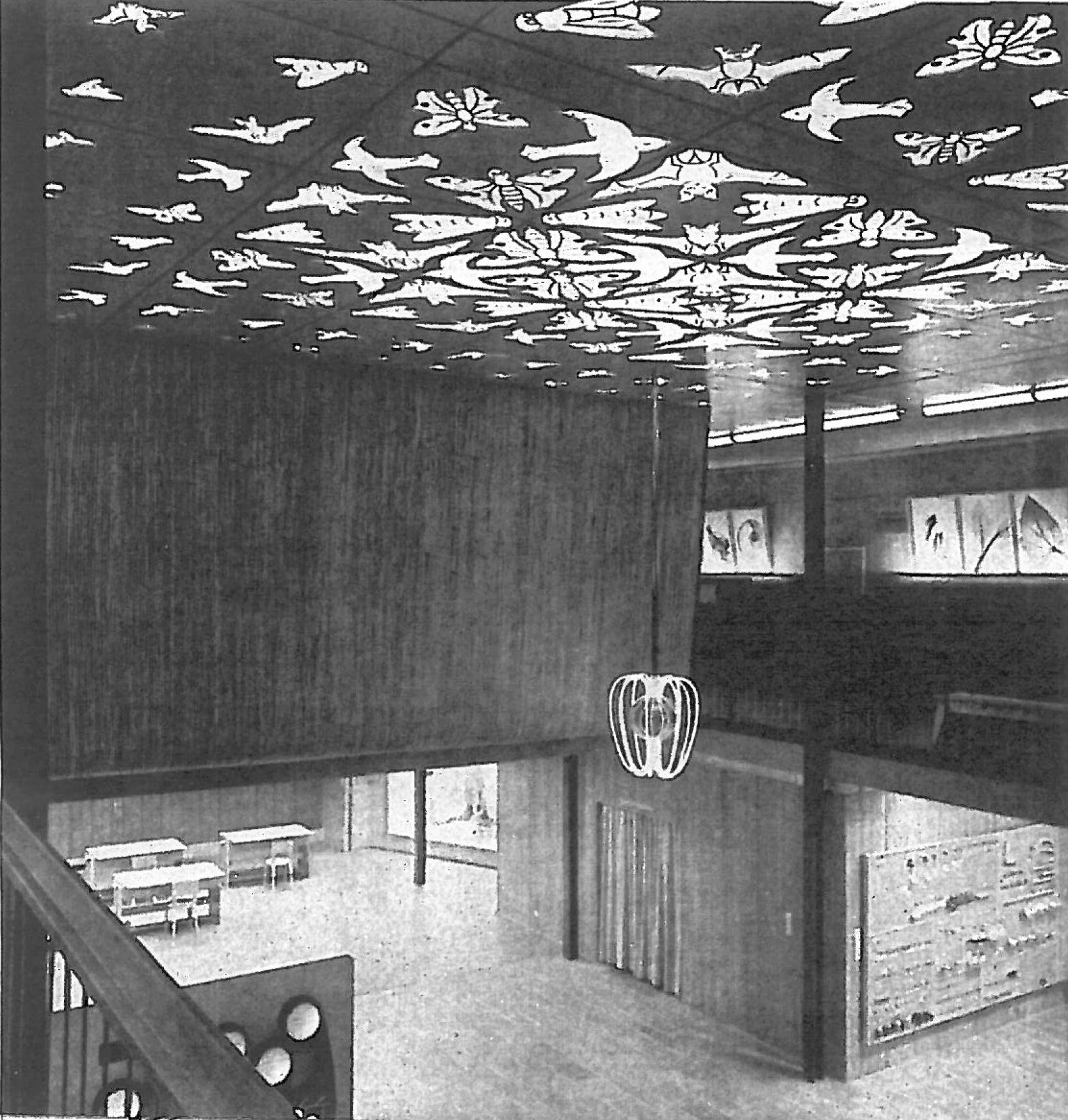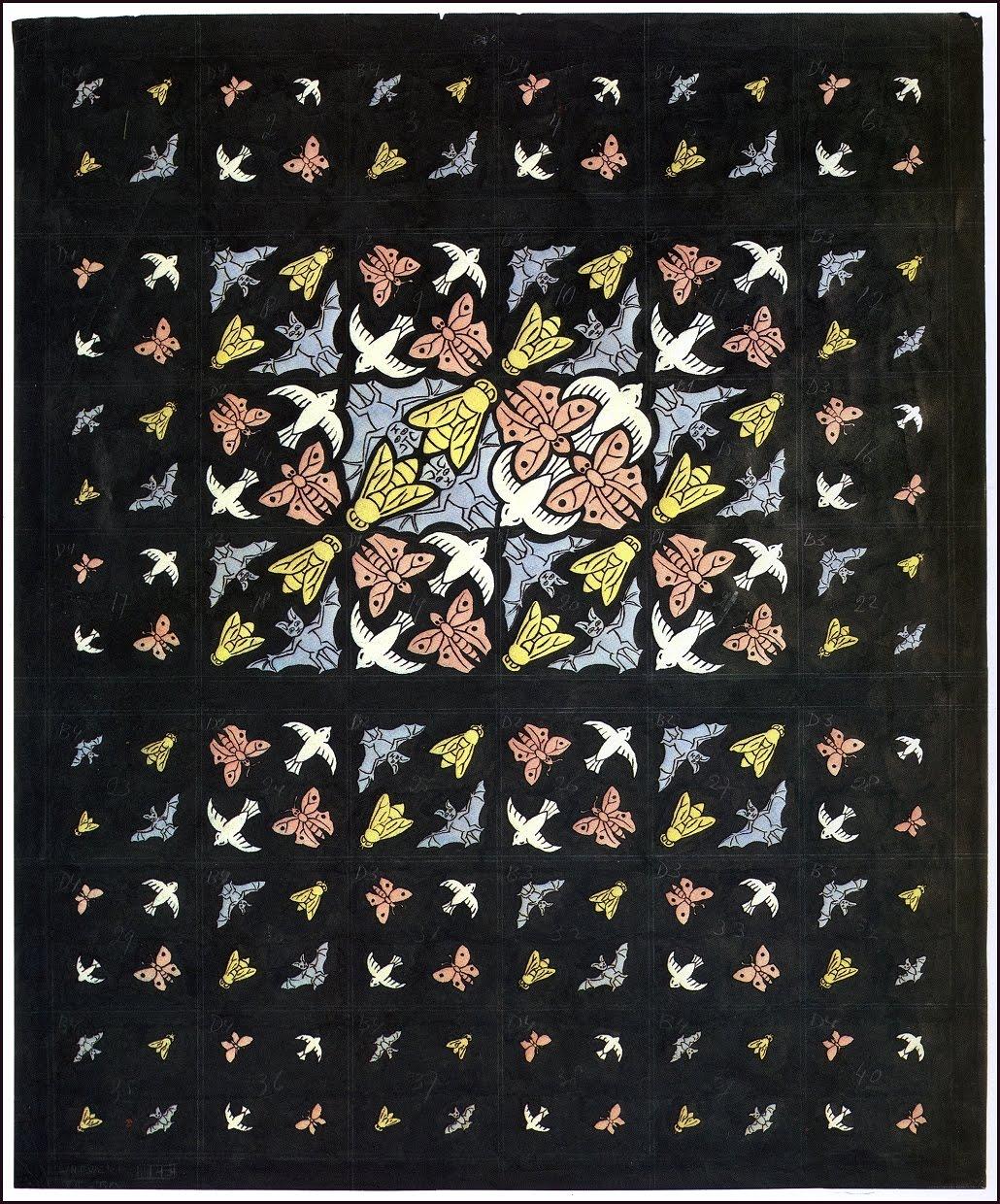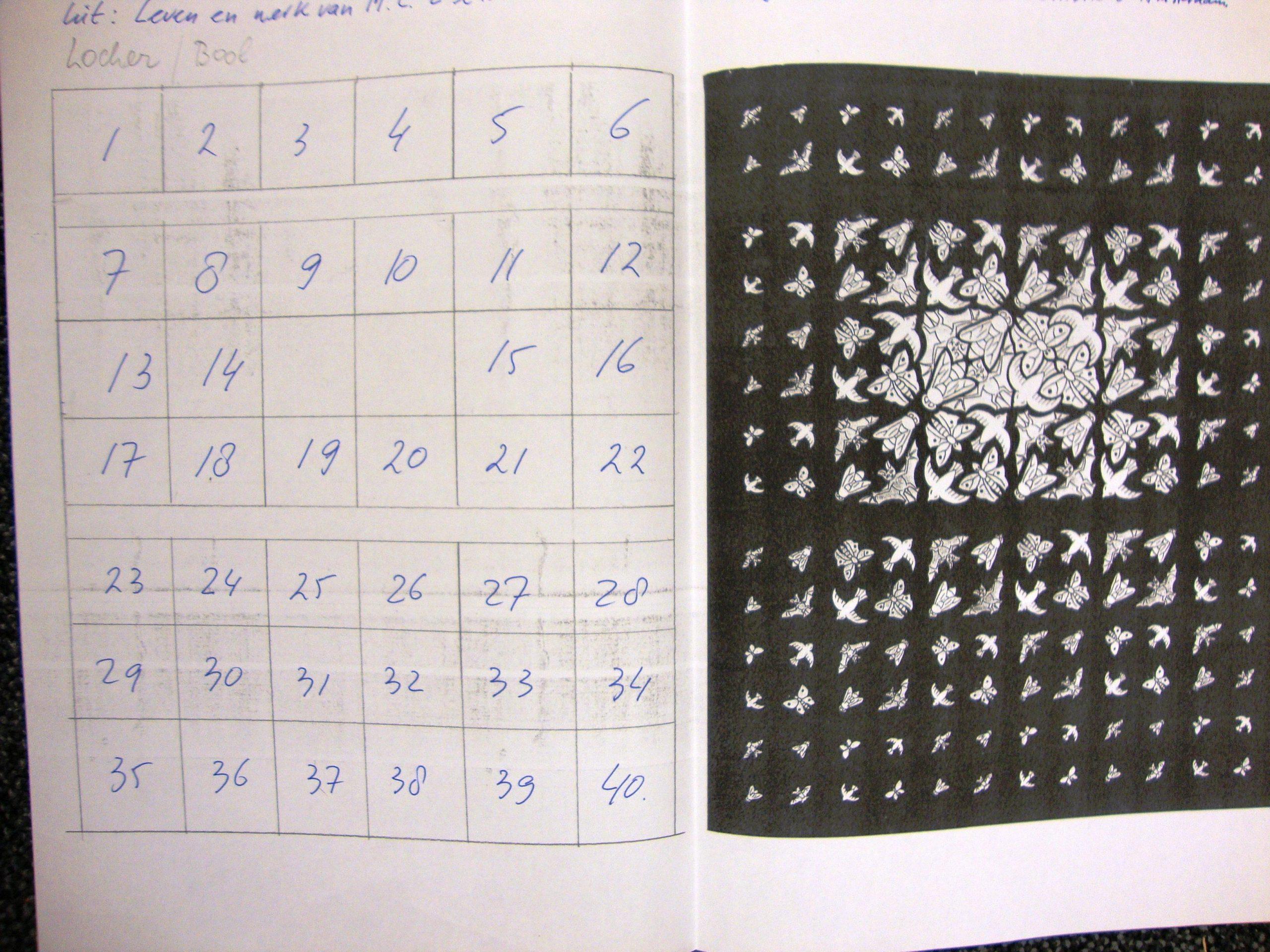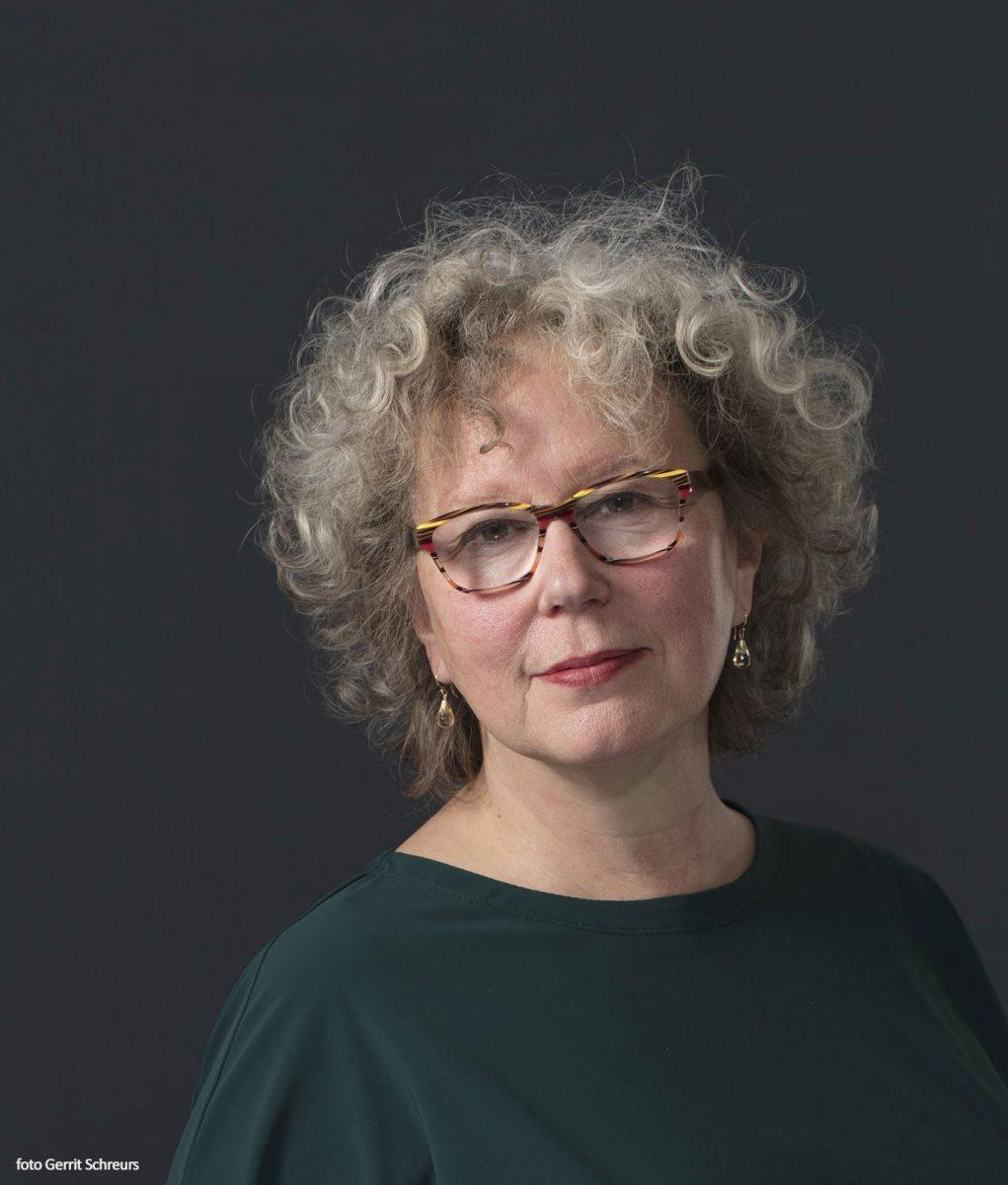
On 25 November 1950, L.C. Kalff MSc (Eng), Director of Artistic Affairs, dictated the following letter:
"Dear Escher,
Thirty-three years ago, we produced countless drawings together for the Delftsche Studenten Almanak. Although I have not had the pleasure of working with you since those early days, I have been following your Metamorphosis from aspiring architect to graphic artist with great interest. I now have a proposal to make, which I hope will be of interest to you.
We are in great haste to create a reception area in the old factory of 1891, to commemorate the 60th anniversary of Philips in May 1951."

The ceiling in its original location
Kalff then goes on to explain the situation on site. Philips is looking for a design: “that facilitates playful interaction between light and dark, that is to say a combination of glass and for example plywood …” Kalff's letter marked the beginning of a brief yet intense collaboration that resulted in a stunning ceiling measuring more than 9 meters by 8 meters. See the photo above.
The building is the first Philips lighting factory to be built in the centre of Eindhoven, and dates back to 1891. After the 60th anniversary celebrations, Philips management envisaged creating an exhibition area showcasing the latest developments in the field of light. The ceiling suited this environment well. However, when the function of the building was changed in 1972, the ceiling was removed and eventually placed in storage at "Centrum Kunstlicht in de Kunst" (Centre for Artificial Light in Art), where in essence it remained wrapped up for decades.
Although the museum had plans to restore the ceiling to its former glory, this challenge proved insurmountable even then, because of its sheer size and the fact that several of the small motifs were missing. Unfortunately, this museum has fallen victim to the state funding cuts sweeping through the cultural sector. The museum has had its subsidies completely withdrawn and has been forced to find a new home for its collection.

Original design for the ceiling by M.C. Escher, 1951
The museum's last director, John Jaspers, contacted Escher in The Palace last year to gauge our interest in the Escher ceiling. That is the big advantage of running a monographic museum, a museum dedicated to one artist: individuals and institutions occasionally bequeath a work of art or other beautiful items that are not directly related to the collection. The Phillips ceiling falls into the first category. The board of Centrum Kunstlicht in de Kunst has decided to bequeath the ceiling to Escher in The Palace. On Monday 13 February 2012, a large art transportation van pulled up in front of the square and unloaded the contents: The Philips ceiling!
Last year, I had the honour of viewing a few items being held in storage at the Centrum Kunstlicht in de Kunst on an industrial estate in Eindhoven. Enthusiastic volunteers helped to lift out the pieces, and reminisced nostalgically about how much they enjoyed working at this small museum. We carefully prized away the top plates from the stack and placed them on the ground. The design comprises rows of diagonal animals, two rows running parallel to each other: one depicting white doves and yellow bees, and perpendicular to this is a row of pink butterflies and lilac bats (The lilac has faded over the years and is now pink). In the oblong space measuring 9 meters by 8 meters, the largest motifs are a third from the top. In essence, the 6 figures make up a tessellation. Each animal moves in a diagonal line to the outer edge of the ceiling, becoming smaller in size as its journey progresses. Even though the wooden frame measures 1.30m by 1.30m, the plane appears to get bigger as the figures get smaller. After the third diminution, the animals no longer form a tessellation, but now occupy their own space within a square. As they diminish in size, they appear to fly further away and to escape the confines of the diagonal row.
This work of art must have been full of surprises. The softly coloured forms stand out beautifully in the darkness of the black ceiling. It must have taken workers and visitors a few minutes to figure out what was happening high above their heads. On 13 February, we spent a few enjoyable hours laying out half of the ceiling in our ballroom. It is always exciting to piece together an unknown work slowly and meticulously. It requires insight and a lot of brain power to "decode" the system, especially as I have never seen the ceiling in situ. The frame, in which the contours of the figures have been sawn out, is not black as shown in the photograph, but soft yellow. The dove, bee, butterfly and bat are made of thin plates of coloured plastic. Only the stripes reveal the identity of the animal, once inserted into the contours of the frame.
After completing the project, Escher sent Mr Kalff a diagram, “a map”. In a letter dated 22 January 1951, Escher explains that the purpose of the map was to “prevent erroneous placement of the different animals.” Fortunately, a bright spark at Philips had the presence of mind to number all forty-two plates of the ceiling, as instructed by Escher. In addition, the back catalogue contained a second diagram of the ceiling; combined, the two diagrams must have offered a clear explanation as to how to piece together the 42 sections. Examining that diagram, it is possible to work out Escher's tessellation technique. It helps to know that the smallest figures were on the outer edge of the frame. The animals become bigger as they move towards the centre in a diagonal line.

The diagram for the ceiling
Although our ballroom is far from small, it quickly dawned on us that the ceiling could not be laid out in full. We have decided to display the right-hand side only. It soon transpired that, despite the size of the box containing loose animals, all the small butterflies, bees, birds and bats were missing. After compiling an inventory, we carefully wrapped up the ceiling for future display. We will never be able to accommodate a ceiling of this size in its entirety. Furthermore, restoring it to its former glory - including the complete sections - would be a time-consuming and costly undertaking. But, one day, I hope to be able to admire part of the Philips ceiling on the second floor of our museum. Lest we forget, that hope springs eternal!
